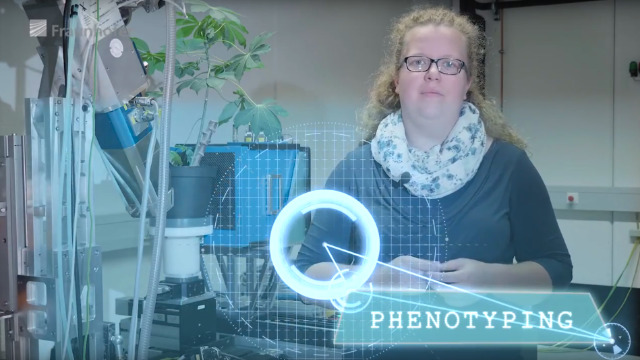Phenotyping involves recording plants’ typing reactions to environmental influences. But what does nondestructive testing have to do with it? How do the cognitive sensor systems we are developing improve phenotyping processes? Dr. Stefan Garth, of the Development Center X-ray Technology EZRT at Fraunhofer IIS, has the answers.



What is phenotyping, and what does nondestructive testing have to do with it?
Stefan Gerth: When it comes to analyzing plant varieties, visual inspection in the field is always an option. But this approach is subjective, which makes it difficult to apply to large areas of open land. That’s why we employ three-dimensional, nondestructive monitoring systems to survey plants in as comprehensive, objective, accurate and above all harmless a way as possible. With the help of nondestructive testing, these systems record the characteristics of a plant, such as its size, its diameter, the weight of its fruits, or its colors. This can be done using electrical, acoustic, optical, or X-ray methods.
How do cognitive sensor systems improve phenotyping processes?
Currently, many surveying and testing standards are designed with the automotive industry in mind. But plants, with their biological diversity, are fundamentally different from the items that come in for automotive testing, which is why we perhaps need completely different recording parameters and evaluation algorithms. For example, a vehicle component that needs to be tested is always built in almost exactly the same way, but an ear of wheat may contain anywhere between two and thirty grains. It is difficult if not impossible to adjust to that using existing methods.
The advantage of cognitive sensor systems is clear: using self-learning methods, computers processing the images recorded can automatically adjust to the biological diversity of plants in subsequent processing steps. This enables them to deliver considerably better analysis results than traditional image processing algorithms. What this means specifically is that both data gathering and all post-processing steps are automatically adjusted to the relevant plant and/or the related task.
How can cognitive sensor systems help with phenotyping in the future?
This might sound banal, but the answer is with objectivity.
It’s very hard to produce objective test results using standard methods. That’s why many cultivators rely on the knowledge of individual experts, which is just as subjective. In the future, cognitive sensor systems will help speed up plant cultivation using conventional methods by in effect putting the necessary tools directly into the hands of cultivators. Applying cognitive sensor systems to phenotyping gives us the opportunity to record and survey the entirety of biological diversity and variance using sensor systems.
